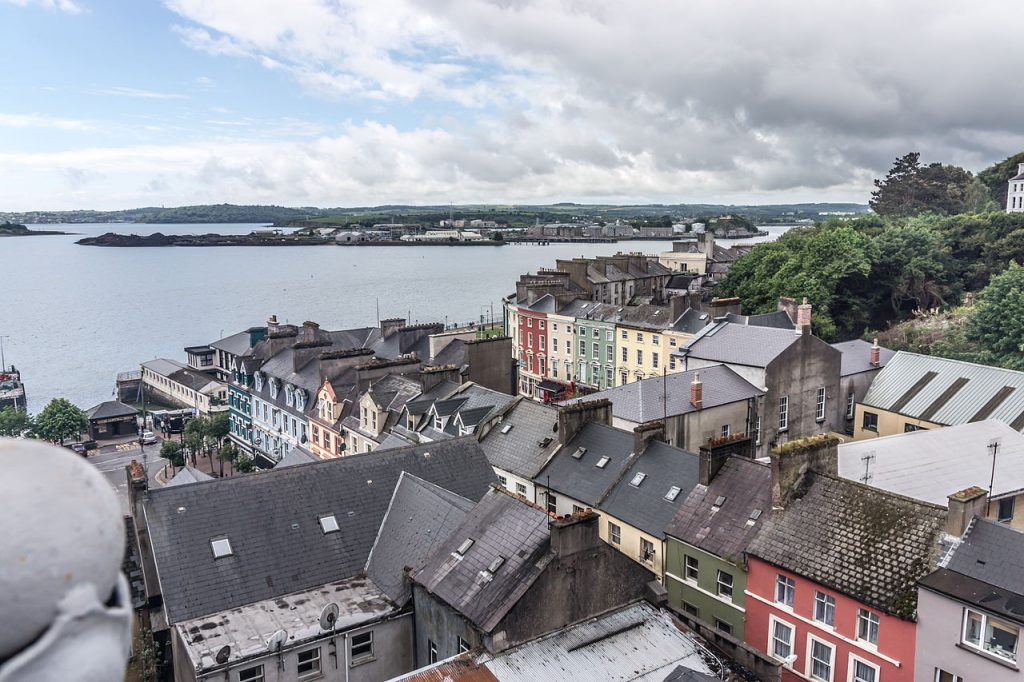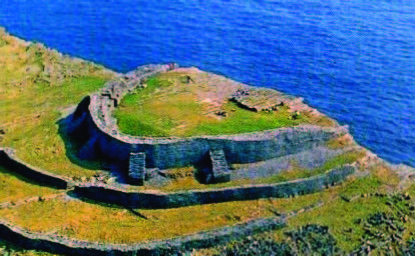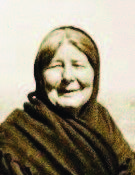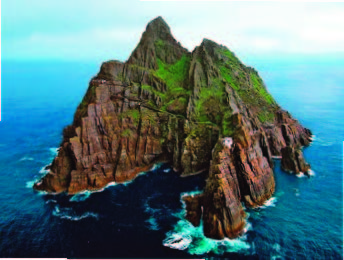By Jim Lynch, Recording Secretary
There are more than 500 islands off the coast of Ireland, which is itself an island, lying west of the island of Great Britain.
Today the population of these off- shore islands stands at about 3,000, dwindling from around 35,000 in the 1800’s. This dramatic decrease began during the Irish famine and continued until the near final blow came in the 1950s and 1960’s when many islands were forcefully evacuated by the Irish Government. A lack of in- vestment in employment incentives (even in good times), harsh living conditions and continuous bad weather which meant that islanders at times were unable to travel to the mainland for several consecutive months, led to these drastic measures. Of the remaining islands that weren’t evacuated, many of their populations have continued to dwindle, with a few seeing stabiliza- tion or even a slight uptick in population during and after the Celtic Tiger (The Celtic Tiger was between 1997 and 2007).
| Rank | Name | County | Acres | ’11 Population (rank) | 1841 Population |
|---|---|---|---|---|---|
| 1 | Achill Island | Mayo | 35,283 | 2,569 (2) | 4,901 |
| 2 | Inishmore | Galway | 7,635 | 845 (4) | 2,592 |
| 3 | Valentia Island | Kerry | 6,371 | 665 (5) | 2,886 |
| 4 | Great Island | Cork | 6,115 | 13,000 (1) | 9,424 |
| 5 | Gorumna | Galway | 5,871 | 1,055 (3) | 1,910 |
| 6 | Bere Island | Cork | 4,372 | 216 (11) | 2,108 |
| 7 | Arranmore | Donegal | 4,335 | 514 (7) | 1,431 |
| 8 | Clare Island | Mayo | 3,949 | 168 (12) | 1,615 |
| 9 | Inch Island | Donegal | 3,425 | 448 (8) | 978 |
| 10 | Lettermore | Galway | 2,254 | 548 (6) | 844 |
A few islands of note:
Great Island

Great Island is the most populous island in Ireland. Located on the island is the emigration town of Cobh, where many of our relatives left Ireland. Great Island is connected to Fota Island which then connects to the mainland by a causeway.
Inishmore Island

Inishmore Island is the largest island among the Aran Islands located about 30 miles from the mainland in Galway Bay; it is the second biggest island in Ireland. The first lan- guage of the people of Inishmore is Irish. The is- land is endowed with ancient sites including Dun Aengus (Rt.), which is one of the most primitive monuments in Europe. It is thought that most of its first structures date around 1100BC.
The Blasket Islands

The Blasket Islands lie three miles beyond the most westerly tip of the Dingle Peninsula in County Kerry. The largest of six islands, Great Blasket, was abandoned in 1953 when the last twenty-two inhabitants moved to the mainland after suffering from famine and emigration. No other island community of comparable size played such a significant role in the development of Irish literature, producing world renowned writers. The three best known are Tomás Ó Criomhthain, Peig Sayers (Rt.), and Fiche Blian. Of the three Peig Sayrs (1873-1958) had perhaps the most traditional world view. Although essentially a personal account of her upbringing on the mainland, her marriage to a Blasket man, and her middle years as a wife on the Island, her autobiographical Peig draws frequently on traditional tales to illustrate her observations. Before she published her first book, she was recognized for her gifts as a storyteller.
The Skellig Islands

The Skellig Islands are two small, steep, and rocky islands lying about 8 miles west of Iveragh Peninsula in County Kerry. The larger of the two is Skellig Michael (Rt.) with two peaks rising to over 750 ft. above sea level. Together with Little Skellig they are the center of an important world bird area. Skellig Michael is also famous for an early Christian monastery which is perched 520 ft above sea level on a ledge close to the top of the lower peak. The amazingly well-preserved settlement of bee-hive huts dates to the 6th century and was abandoned as a monastery in the 12th century. It is an UNESCO World Heritage Site. The other UNESCO site in Ireland is Newgrange.